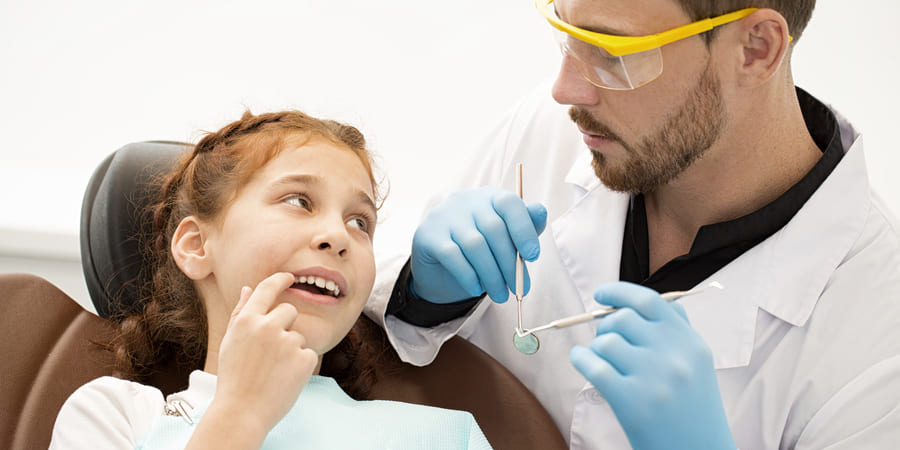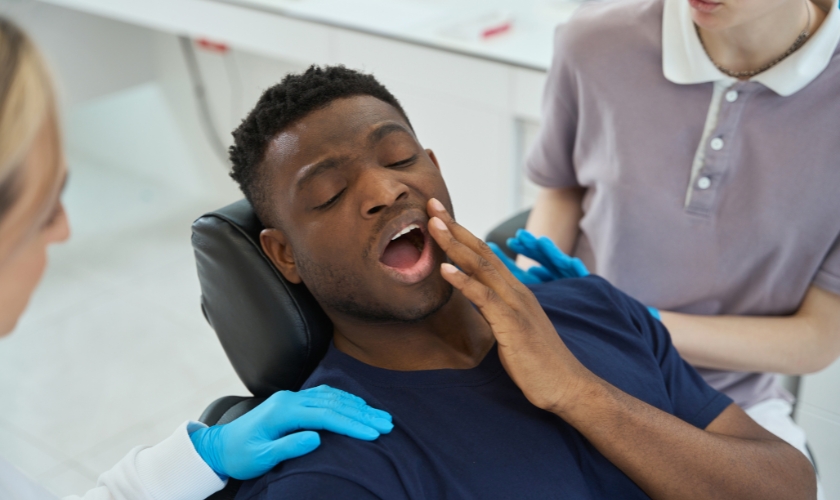
As a parent, there’s nothing more stressful than seeing your child in pain, especially when it involves their teeth. Whether it’s a sudden toothache or a tooth knocked out during a playful game, dental emergencies can happen unexpectedly, leaving you feeling overwhelmed.
Knowing how to identify when it’s an emergency and how to react can make a world of difference in managing the situation effectively.
This guide will walk you through the most common dental emergencies children face and provide a helpful checklist to ensure you’re prepared if one happens. From severe tooth pain to fractured teeth, we’ll break down what to look for, how to handle each situation, and when to seek professional help.
With the right knowledge, you can stay calm, confident, and ready to take action. Keep reading to make sure you’re well-prepared to care for your child’s smile when emergencies strike.
Common Dental Emergencies in Children
Dental emergencies in children can be sudden and alarming for parents. Whether it’s a knocked-out tooth after a fall or a severe toothache, these situations often require quick action. Understanding common emergencies can help you feel more prepared when your child faces one.
- Knocked-Out Teeth: Kids often lose teeth due to falls, sports accidents, or rough play. This common occurrence is most alarming when it involves permanent teeth.
- Toothaches: Toothaches are another frequent issue, usually caused by cavities or gum infections. They can cause significant pain, affecting eating and sleeping.
- Fractured Teeth: Children may fracture or chip teeth from accidents, falls, or biting something hard. Even a small fracture can cause pain or discomfort.
- Cuts to the Gums or Mouth: Cuts on the lips, gums, or inside the mouth can happen during play, sports, or accidents. These injuries might bleed heavily but usually heal quickly with proper care.
Most of these emergencies are preventable with proper oral care. For instance, wearing a mouthguard during sports and regular dental checkups can significantly reduce the risk of injury. However, when an emergency does occur, acting swiftly and knowing what to do can minimize damage and pain.
Signs of a Dental Emergency: What Parents Should Look For?
Knowing the signs of a dental emergency in kids is crucial. Not all dental issues require immediate professional attention, but some do. Understanding these signs can help you decide whether your child needs to see a dentist right away.
- Extreme Pain: Persistent or severe pain in the teeth, gums, or jaw is usually a sign of a significant issue. Immediate attention is often needed.
- Visible Damage: Broken or knocked-out teeth, or severe swelling or bleeding, can indicate an urgent need for care.
- Swelling and Tenderness: Swelling in the face or gums may indicate an infection or abscess. These need to be treated right away to prevent the infection from spreading.
- Discomfort When Eating or Speaking: If your child experiences difficulty chewing, speaking, or eating due to pain, it might indicate an underlying issue that needs professional care.
If you notice any of these signs, it’s essential to contact a dentist immediately. If you are unsure whether it’s an emergency, always err on the side of caution and consult with a professional. An emergency dentist in Newton, can help guide you through these situations and offer advice on how to handle the issue before your appointment.
Handling a Knocked-Out Tooth: A Parent’s Guide
One of the most common dental emergencies in kids is a knocked-out tooth. This can be caused by falls, sports accidents, or rough play. A knocked-out tooth is a stressful situation, but with prompt action, you can improve the chances of saving the tooth.
- Act Quickly: Time is crucial when dealing with a knocked-out tooth. Try to reinsert the tooth into the socket gently. If that’s not possible, place it in a container of milk or saline solution.
- Preserve the Tooth: Avoid touching the root of the tooth, as it can damage the delicate cells necessary for reattachment. Keep the tooth moist to increase the chances of saving it.
- Seek Professional Help: Contact your dentist or visit the emergency room immediately. The tooth has the best chance of being successfully re-implanted if treated within an hour.
Make sure your child avoids touching or moving the tooth unnecessarily to prevent further injury. Taking swift action in these situations can save your child from more severe dental issues in the future.
Managing Severe Tooth Pain: When Is It an Emergency?
Tooth pain in children can range from mild discomfort to excruciating pain. It’s essential to understand when pain crosses the line from mild irritation to a dental emergency. The difference could be critical for your child’s comfort and health.
- Mild vs. Severe Pain: Mild pain can be managed with home remedies, such as a cold compress or over-the-counter pain medication. However, severe or persistent pain is a red flag.
- Possible Causes: Tooth decay, infections, abscesses, and even gum disease can all lead to significant pain. In some cases, severe pain can indicate a more serious condition like an abscess that needs urgent care.
- When to Seek Help: If the pain is severe, doesn’t go away, or is accompanied by swelling or fever, it’s time to visit a dentist. Delaying treatment can lead to complications, such as infections spreading to other areas.
Remember, dental emergencies in kids often come with additional risks if untreated, so don’t hesitate to contact your dentist as soon as pain becomes unbearable.
What to Do if Your Child Has a Fractured or Chipped Tooth?
Fractures and chips in children’s teeth are relatively common, especially for active kids. While a fractured tooth may seem like a minor issue, it can cause long-term damage if not properly managed.
- Immediate Steps: If your child chips or fractures a tooth, try to locate the pieces if possible. Store them in a clean container with a moist cloth or milk.
- Protect the Tooth: Rinse your child’s mouth with warm water to clean the area. Apply a cold compress to reduce swelling if there’s pain.
- Seek Care: A dentist will evaluate the extent of the fracture and determine whether the tooth needs filling, a crown, or even a root canal.
Oral Injuries from Accidents or Sports: How to React?
Accidents, falls, and sports injuries are among the most frequent causes of dental emergencies in children. These injuries often involve broken teeth, cuts in the mouth, or even tooth loss. Being prepared for these scenarios can help minimize harm.
- Common Injuries: Falls while playing, sports accidents, and even roughhousing can lead to chipped teeth, knocked-out teeth, or cuts in the mouth.
- Sports Safety: Use of mouthguards during contact sports like football, hockey, and soccer can significantly reduce the risk of injury.
- Emergency Care: For cuts and bruises, apply pressure to stop the bleeding, and clean the wound gently. For broken or knocked-out teeth, follow the guidelines for tooth preservation and seek professional help immediately.
Identifying a Dental Abscess: Signs and Urgency
A dental abscess is a serious infection that can occur in children’s mouths, often resulting from untreated cavities or gum disease. Knowing how to identify the signs of an abscess can prevent severe complications.
- What Is an Abscess?: An abscess is a collection of pus caused by a bacterial infection. It typically forms at the root of a tooth or in the surrounding gum tissue.
- Signs to Watch For: Symptoms of a dental abscess include severe, throbbing pain, swelling in the mouth or face, fever, and sometimes a visible pimple-like bump on the gums.
- Immediate Care: Abscesses require urgent care. If left untreated, they can cause the infection to spread to other parts of the body, leading to more severe health problems. Contact your dentist immediately if you suspect an abscess.
When to Seek Emergency Dental Care: A Parent’s Decision-Making Guide
Knowing when to seek emergency dental care for your child can be tricky, especially in high-stress situations. However, following a few simple guidelines can help you decide when it’s time to contact your dentist or visit the ER.
- Call Your Dentist First: If the situation involves pain, a fractured tooth, or other visible damage, call your dentist for guidance.
- Go to the ER for Severe Injuries: For traumatic injuries, such as severe cuts or jaw fractures, visiting the emergency room may be necessary.
- After-Hours Care: Find out if your dentist provides after-hours emergency care or locate an emergency dentist in your area. Having this information on hand can help you react quickly.
Knowing how to identify a dental emergency in your child is crucial to ensuring their health and comfort. With the right information and quick action, you can minimize the risk of lasting damage and pain. Keep this checklist handy, stay calm in stressful situations, and remember that timely dental care can make all the difference. Whether it’s a knocked-out tooth or severe tooth pain, being prepared will help you make the best decisions when your child needs it most.



